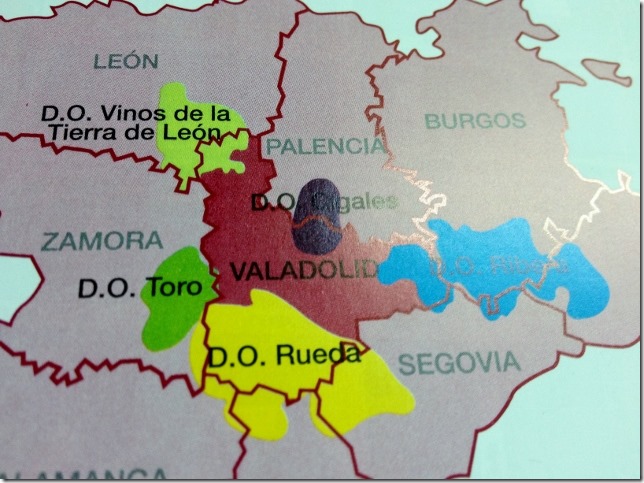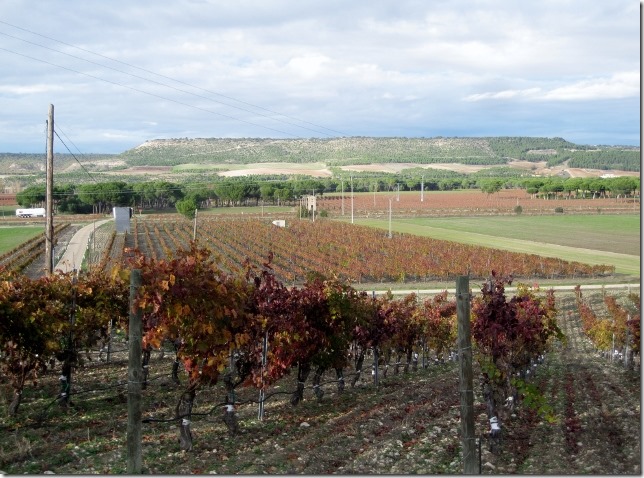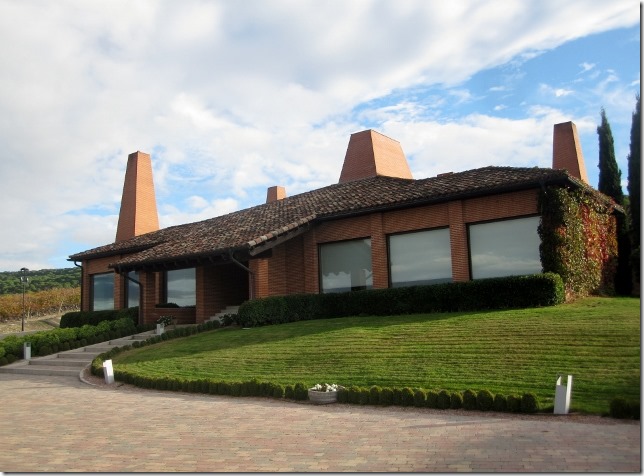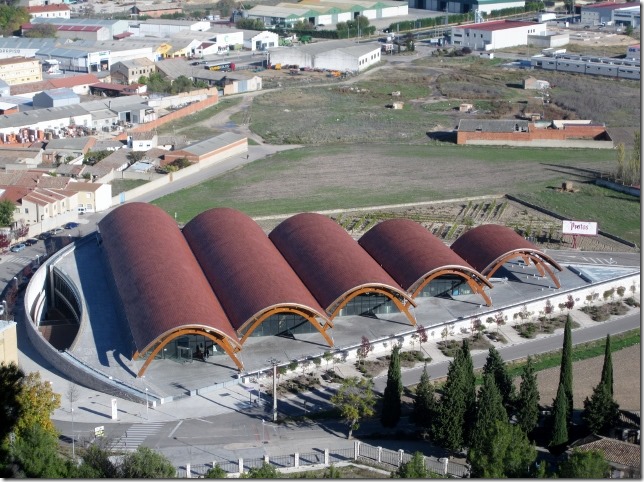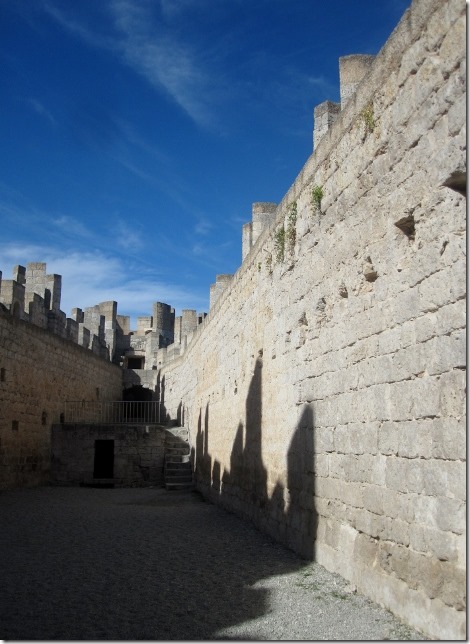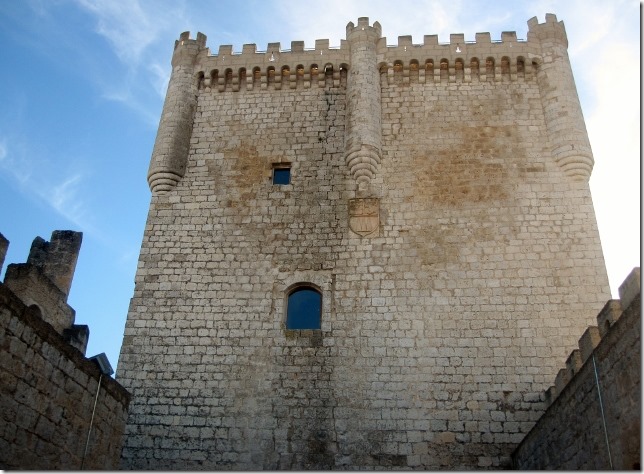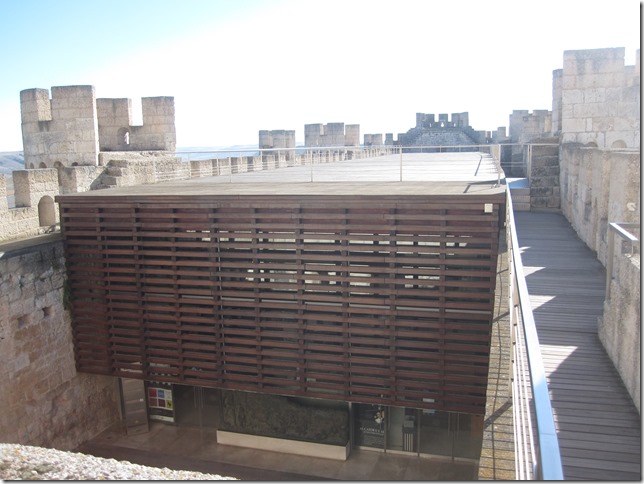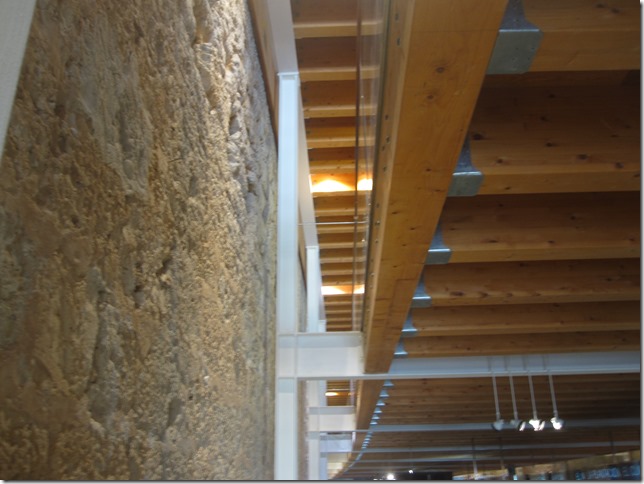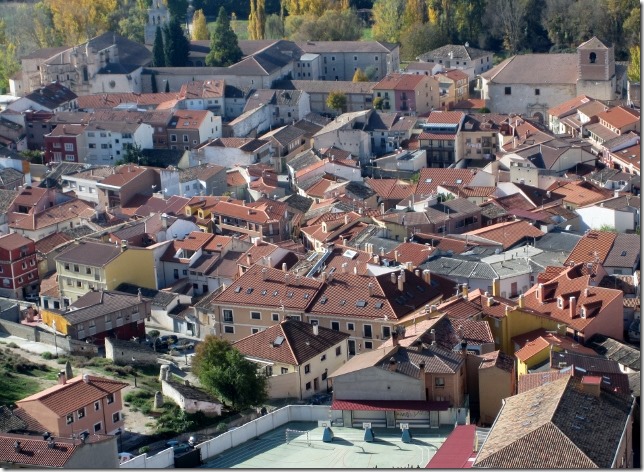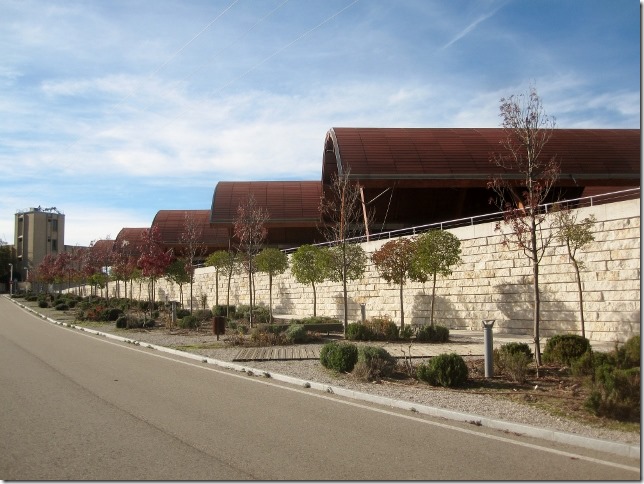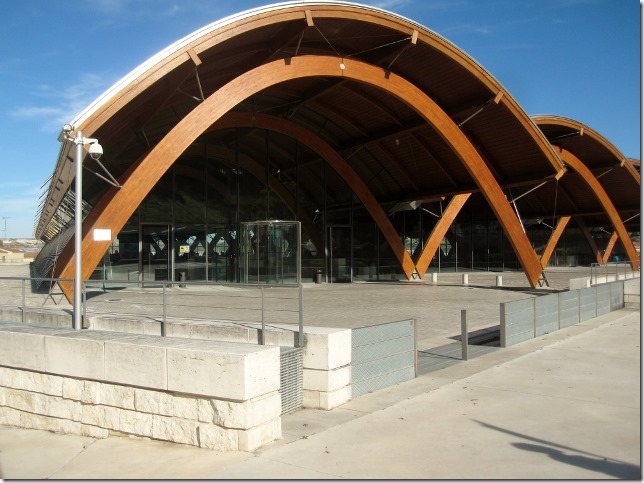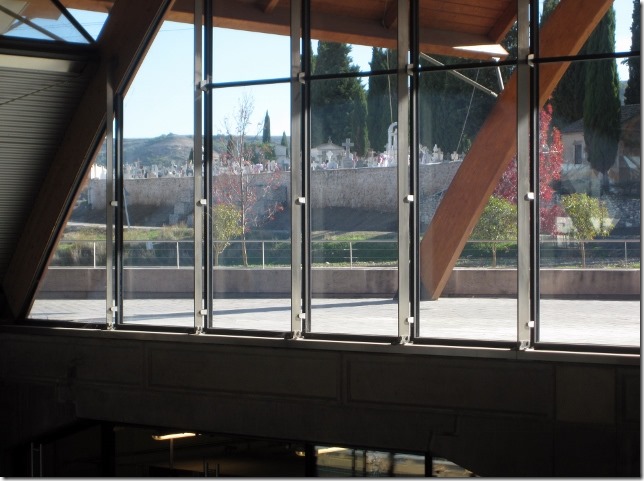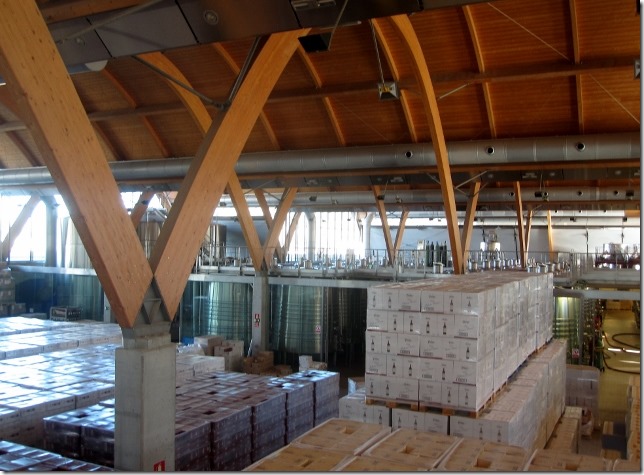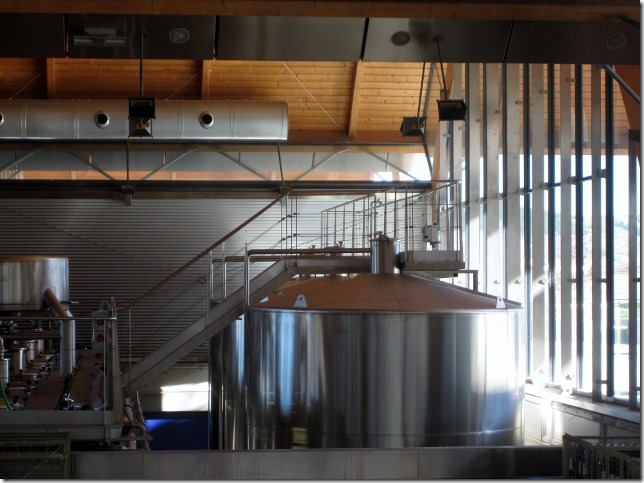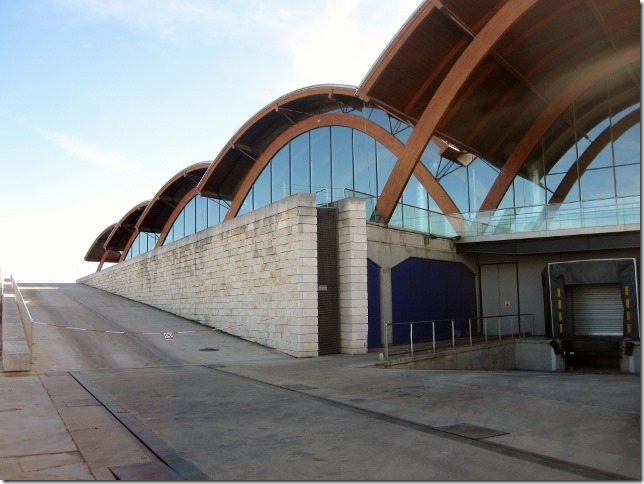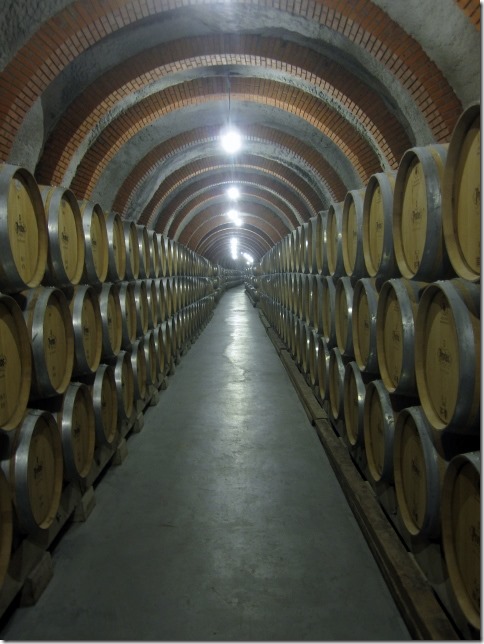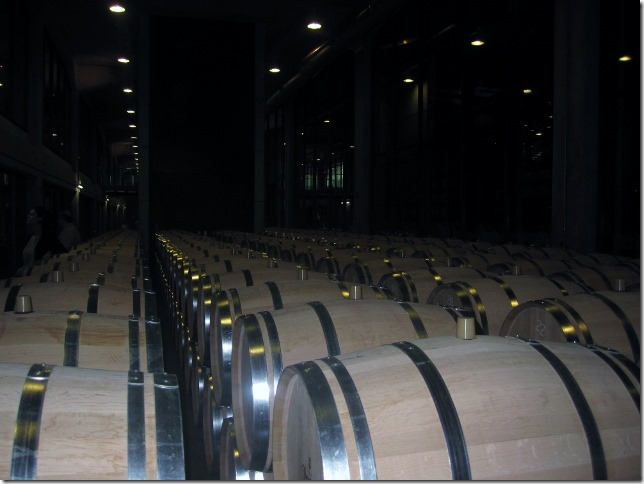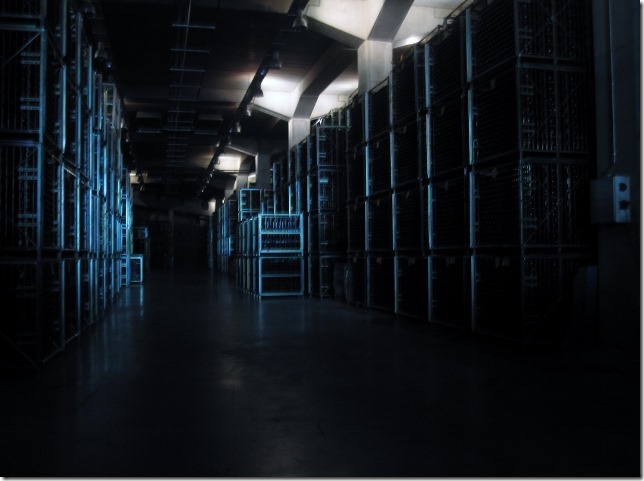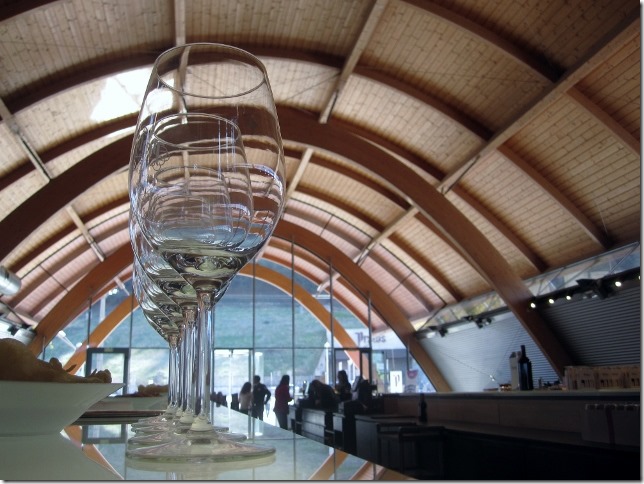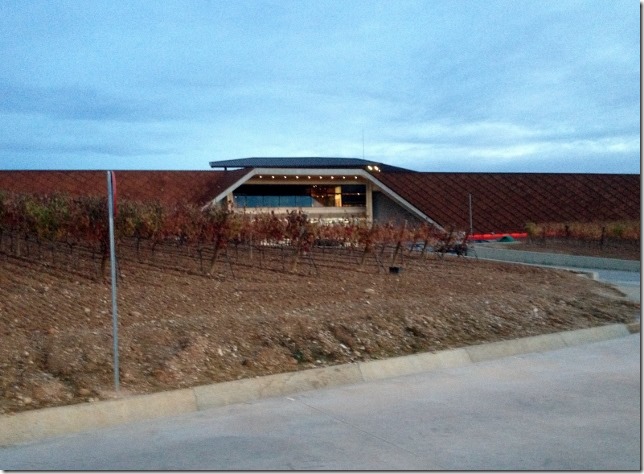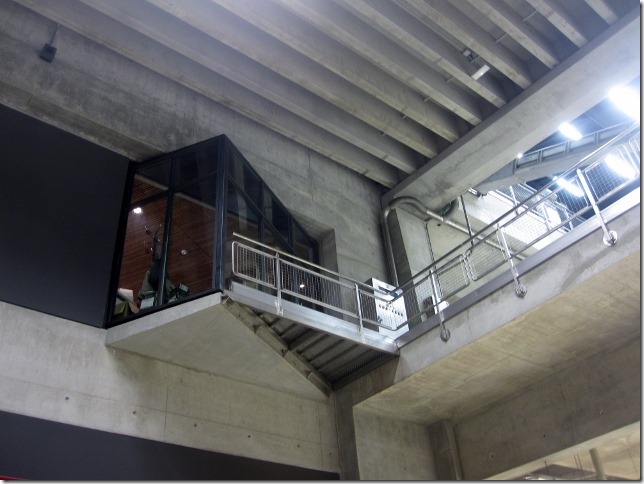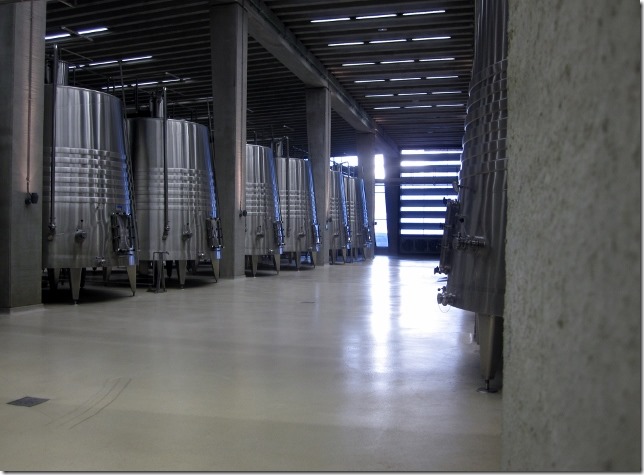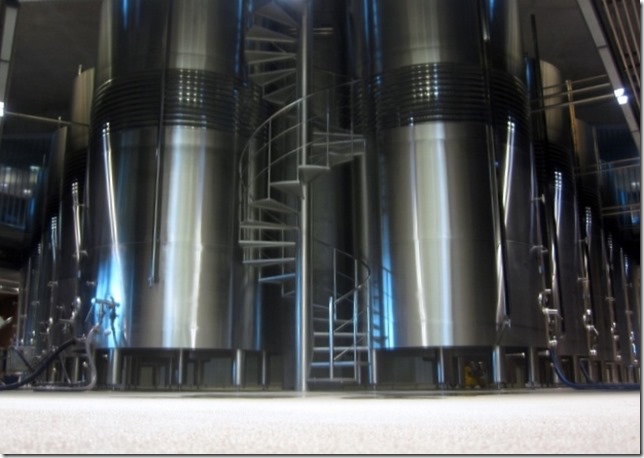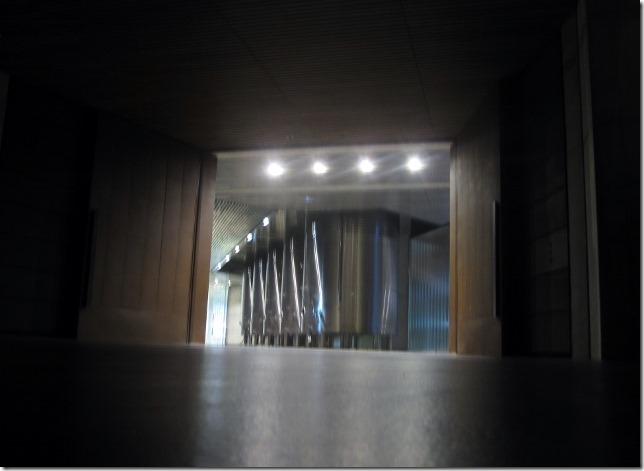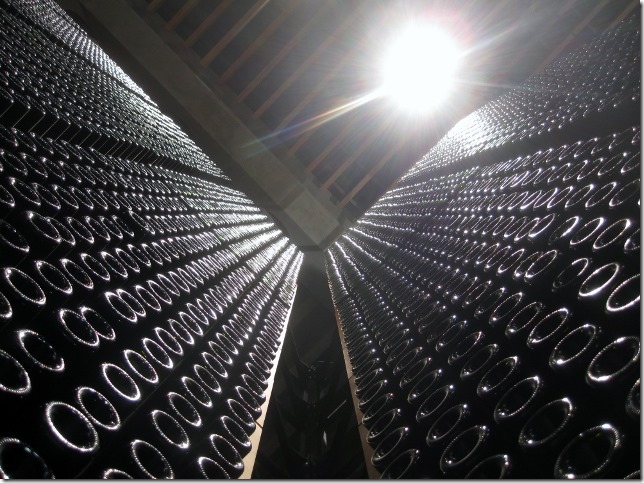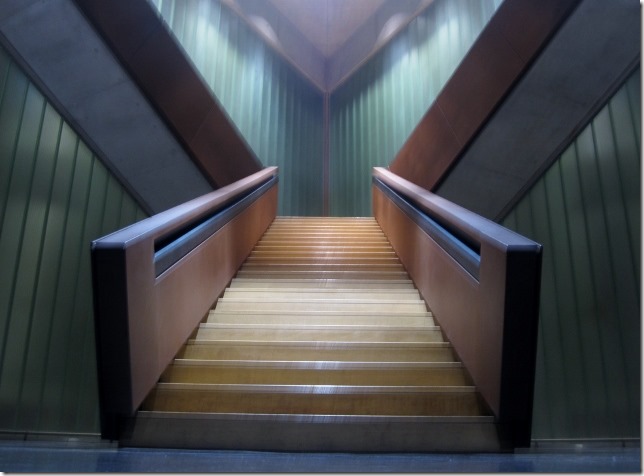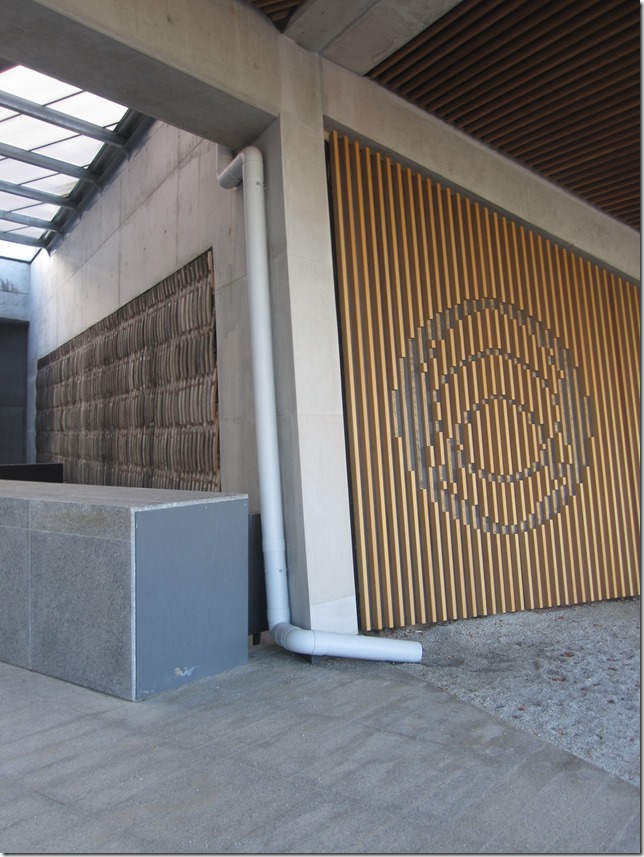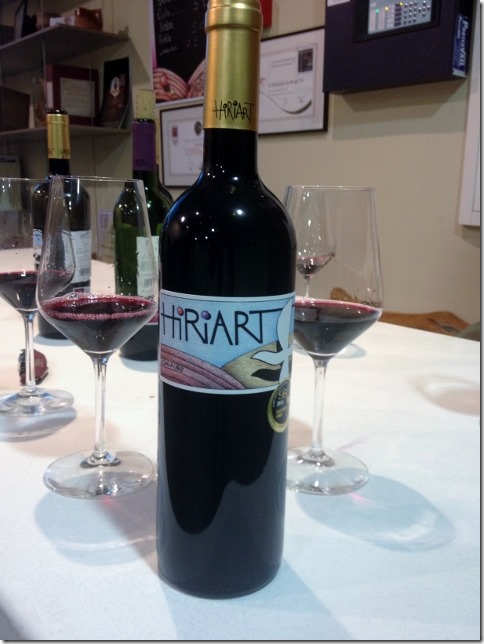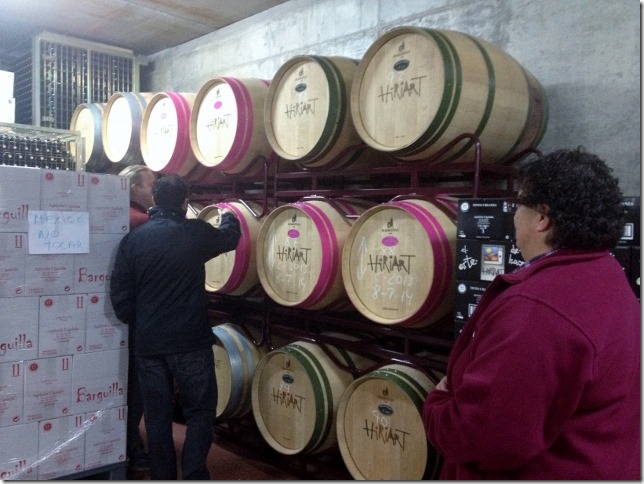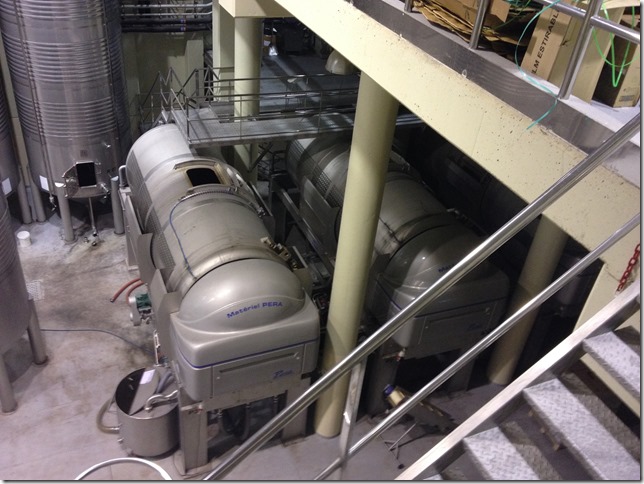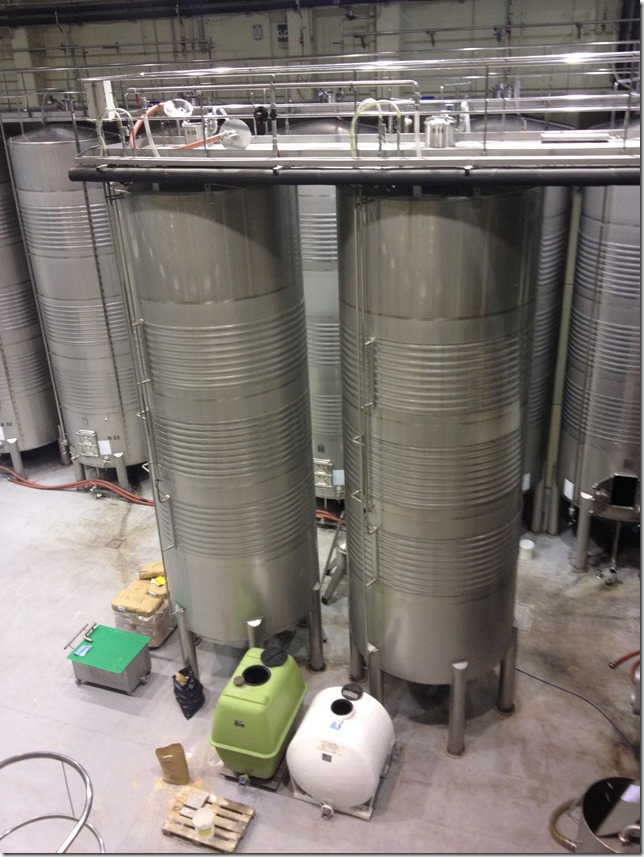After the brief break in Picos de Europa we are back to wine touring, now in the province of Valladolid. This region has five Denominaciones de Origen (D.O.): Ribera del Duero, Rueda, Cigales, Toro and Vinos de la Tierra de Leon, we visited three.
Here is the wine map of Valladolid with all its D.O.s
Originally, we were planning to visit only the wines of Ribera del Duero for various reasons.
Firstly, we couldn’t miss the opportunity of seeing two wineries designed by two well-known British architects: Norman Foster and Richard Rogers; secondly, to visit Fermin, a good friend of mine who lives in Valladolid, and finally because my uncle Manolo highly recommended it for having the best red wines in Spain and the most expensive, although it is questionable whether the latter guarantees the former. So here we are, we want to know if this is the case.
If you have followed our travels, you know by now that we are wine lovers and have visited a few wineries in France and in Spain. Therefore, I don’t think there is much what we could learn about the wine-making process without taking it any further, and we won’t. We are not aiming to be professional wine-makers. However, our increase knowledge about wines has awaken our general interest in the wine industry. We continuously ask the guides about the technology the wineries use, their marketing strategy, their biggest markets, their exports, etc. This information has allowed us to compare the different regions.
So, how does Ribera del Duero compare to La Rioja, the Loire Valley and Bordeaux? Lets start the tour.
Bodegas Viῆa Mayor, Quintanilla de Onesimo, 35 kms east Valladolid
The first difference we notice, compared to the well-known wineries of La Rioja, is that they do not use of oak vats for the fermentation process. Instead they use stainless steel vats. The former is too expensive and it needs to be replaced every three years. Moreover, it is less hygienic and harder to clean. It sounds like a bad investment.
Is it the tradition associated with oak vats that people like? Does it really impact on the quality of the wine or is it just subjective? If so why are the Spanish beginning to prefer the Duero region?
We are beginning to suspect that the oak vats are purely a traditional marketing ploy, they look beautiful in a well lit warehouse and would contribute to a well produced brochure. Perhaps they have little to do with improving the quality of the wines anyway.
The second significant difference. They are introducing mechanical harvest, something that the majority of the wineries in La Rioja don’t even want to contemplate. Bodegas Viῆa Mayor want to make good wines, with lower production costs without compromising quality. The machine will allow them to do this. However, although it can damage the vine in the long term, they are exploring the possibility of growing and training new plants to accommodate how the machine works. This shows initiate and entrepreneurial spirit. The attitude needed to compete in an already tough market.
The building is not particularly interesting. We can’t wait to see what the wineries designed by Richard Rogers and Norman Foster have to offer.
I quite liked the design, it was consistent across the whole winery, here you just see the reception. The brick and tiles are used thoughtfully, and the scale is well considered with good views across the vineyards through the large expanses of window. Not trying to be too pretentious. GDR
Most of the annual production is sold in the national market. Only 15% goes abroad. It is crazy!!
We tried a Crianza and a Reserva. They are both good wines, but their quality is not dissimilar to some we have tried in La Rioja. However, the price is on average €3 per bottle higher than Rioja. This is not a very good strategy if they want to compete with them.
Bodegas Protos, in Peῆafiel, designed by Richard Rogers
We are visiting this bodega this morning, but not until 13.00. In the meantime, we will pop in the Castillo de Peῆafiel, quite famous, but mainly because there isn’t a great deal to do in the village.
The castle is located on the top of the hill but it is not worth driving Dora all they way up. We will walk. We are glad because from here, we get an aerial view of the winery. Very cool. I think it looks like a bunch of red grapes hanging from the vine.
Brief visit to the castle. There is so much you can get out of these visits without much information about the history of the place.
The interesting feature, the shape. Rhombic and linear, following the contours of the hill where it was built.
There is hardly anything from the times the castle was in use, only the footprint. The majority of the building has been restored.
What I liked about the building, getting back to me banging on about contemporary insertions into cultural buildings. Here, in the centre of the castle courtyard, a wine museum, all very modern and beautiful. Sacrilege in the UK, Gotta leave it as it is! Just restore. How to encourage a wider use, bring in a different interest.
Brilliant, maybe we should consider for some of those underused and desperately in need of restoration of churches in Spain. Maybe a quick transformation into an El Corte Ingles (Spanish department store) would get some more productive use out of them! GDR
Notice the subtle gap between old and new! GDR
You can still enjoy a panoramic view of the villa of Peῆafiel from above. It is again, such a beautiful and warm day for November.
At last, it is time to see the winery. It is a very well-established winery in the region, with an annual production of up to 5 million litres in a good year. Not a bad position in the regional market, considering the annual regional production is 21 million litres from more than 250 wineries.
We were told this but the stats do not ring true to us. Someone can only be producing a cupful! GDR
The building consists of five arches, each destined for each step of the fermentation and bottling process. Very well-organized.
Glass has been used to lift the walls. This makes the rooms bright and bigger. Nice place to work.
Also, people can see the processes from outside. Although if I was the owner, I wouldn’t like noisy people looking at how we work without paying a fee.
Like the winery we visited yesterday, it dismisses the oak vats for fermentation process. This seems to be the norm in Ribera del Duero.
Typical Rogers and beautifully executed. His signature, everything exposed. GDR
The whole place portrays a factory outlook. The building has been designed to accommodate the logical process of making wine.
Everything is done in this new bodega except for the aging process which is performed in the old bodegas. The old bodegas were built decades ago and they are still in use. They are located underground where the wine can be kept at low temperatures and away from light. These are still the best conditions to age wine in barrels and this is the reason why this process has not been moved to the new winery designed by the architect.
The scale of the place is impressive. They have capacity for three times more barrels. However, although they produce around 5 m litres a year, very little is sold abroad. I would have thought this winery had a better marketing strategy in place. Their excuse, they can’t compete with Rioja.
According to the guide tour, they never have residual stock. What they produce they sell. Good for them.
However, they sell their wine at an eye-watering price: average of €15.00 per bottle. What is wrong with these guys in Ribera del Duero? I wonder why they don’t sell a great deal abroad!
Time to assess whether the price justifies the quality in the wine tasting. We have tried a crianza. Very good quality, smooth and complex. Again, nothing dissimilar from Rioja. It was interesting the guide tour coming that the original budget to design the bodega was €12m and it ended up costing €37m. Justified? who to blame? the guide tour smiles, shrugging her shoulders. Would that be the reason to keep wine prices high?, I wonder.
Many things can be attributed to such an increase;
Was the initial estimate reasonable?
Has the scope stayed the same or increased, a bigger building inevitable costs more.
Were there any justifications for the increase, greater marketing exposure caused by the building.
Still what struck me was that savings could have been made which have obviously not; the terracotta tiled roof is extremely costly, in that it is only providing colour and protecting the waterproof membrane underneath. A glass stair in a concrete tube, not contributing to natural daylight and the last small arch, is purely decorative. You have to admire the practices ability to persuade. GDR
Bodegas Portia, in Gumiel de Izan, designed by Normal Foster.
Gary has been looking forward to this for a long time.
The design is nice, clean and linear. From above, it looks like a flower with three petals. Each petal has been designed for each step of the wine-making process: one for the receipt, selection and fermentation of the grapes, another for the aging and finally one for the bottling and labelling.
It is very well-organized. Tractors packed with grapes arrive from one side, drive onto the roof, drop the grapes and continue to drive along the other side, without causing any chaos. Very efficient.
Apparently, Foster spent two harvests here before designing the winery to understand the wine-making process.
The building looks simple, geometrically perfectly designed. Typical Foster. He only used four materials: concrete, timber, glass and stain steel.
Again, this bodega uses stain steel vats, like the one we saw yesterday.
After the first petal, where the one is fermented, we move to the second petal, through big automatic doors opened by remote control. It seems like you are walking along a space station.
Are we in the cinema seeing a science-fiction movie?
Another quirky design from Foster, a vertical bottle rester, practical and efficient. The wine-maker can look at glance the state of the cork and quickly assess if the wine is aging well.
The bodega does only four wines, Roble (young), Crianza, and two signatures’ wine. One of the signature’s wines you can only get it in gourmets chains and finest supermarkets. The other one you can only buy it in this bodega. Prices for the four are €5.00, €6.00, €13.00 and €25.00 respectively.
Very efficient and focused. It is hard to say whether Foster picked up the philosophy of the bodega or the bodega changed their process as a consequence of how Foster designed the building. What was first, the chicken or the egg?
We also like their approach. ‘Lets do few wines, be very good at them and sell them at a competitive price’. People who want to buy Ribera del Duero may likely to go for Portia. As technology improves, the quality of the wine standardises across the bodegas and, therefore, consumers will become more prices sensitive.
I was sceptical at first. The entrance has two very poorly positioned downpipes, someone needs to get fired (shot) for that sort of mistake.
And the reception poorly lit, dark foreboding and some rather manky cardboard furniture.
But then the logic of the building is revealed. This is what made Foster. A clinical approach taken to the extreme. An extreme beauty. The darkness, is a consideration for the wine, which dramatizes the visit. The building is like a hospital separating the visitor from the production process. The production process is also clinical and makes the best of the natural materials, in this case stainless steel. Lined up symmetrically, everything is aligned, every vat, every pipe, every roof structure, every bottle. This makes it all the more seductive. Susana is right, this is straight out of sci fi, the next generation movies will be shot here. Beautiful.
It has also so transpired that we cracked open the bottle that we purchased from Portia, and even away from the glamour of the winery we were impressed. Not only the price, but the quality of the wine. purely sublime. It seems that Norman also makes a fine bottle to compliment his beer! GDR
Bodegas Hiriart, Cigales
The next day, we visited a bodega in Cigales. This reservation was arranged by my friend Fermin and it happened to be under the Denomination de Origen of Cigales. New region, new wines, perhaps new practices. We were looking forward to this.
We soon learnt that this D.O. mainly famous for rose wines. The wines we like least.
This was a small bodega, although the owners have been wine-makers for generations, working for other wineries.
They started in 2008, when the credit crunch occurred, so making it work is still quite hard. However, they have received more cages to age wines in the bottle. This is a good sign.
The building is quite ugly. Gary has expressed this quite clearly, as he normally does. “We didn’t have enough money”, the owners laugh. Typical reaction from Spaniards, they don’t like the abrupt response.
The frustration is that it is not about cost; it is about organisation. These are factories, factories for wine and they need a good diagram, both the Fosters and Rodgers buildings had one, this one did not. The central reception cut the production facility in half, crazy and meant we nearly got run over by a forklift truck, no separation between visitor and worker. Why? Because the architect wanted a symmetrical building! Pure foolishness. Let the form of the building follow its function. Get a good diagram. It wont cost more. GDR
We were impressed by the design of their its labels though. Quite funky.
and their idea of painting the barrels to distinguish wines and years. It is an adventurous approach. I guess you have to differentiate from the others somehow.
Again, they are not very good at exporting. Perhaps this is embedded in the Spanish culture. Generally, Spain doesn’t sell itself very well, compared to other countries like Italy or France.
At the wine tasting, we didn’t go for the rose. We tried the Crianza they also do. Complex, oaky and with surprisingly smooth finish at a competitive price: €6.00. In Ribera del Duero!! Lets buy one bottle as the visit will be free, thanks to Fermin.
Bodegas PradoRey, Denominacion de Origen RUEDA
This D.O. means lots to us as it was the white wine we served at our wedding. We visited the bodega of PradoRey in Rueda, north of Valladolid.
Rueda is famous for its white wines. This region has imported a few grape varieties over the years but the oldest and most famous from this region is the grape of Verdejo, which they believe the Muslims brought back in the XI century (I thought they didn’t drink).
Interestingly, here, the grapes are harvested automatically at night, to prevent the grape from suffering from heat.
This bodega also welcomes technology. The first press of the grapes is made in big tanks with a membrane inside that gently pushes the grape to separate the stems and skins without damaging the pulp. Much quicker than manual selection.
They are also pioneer in applying a system which shoots gases (carbon dioxide) at high pressure to cool the grape and strengthen its flavour and freshness. They are the first winery which have implemented this system in the D.O. of Rueda.
We can see that bodegas in Rueda are highly mechanised.
The reality is that more and more people are joining the wine culture and they are doing so earlier in age. The tapas culture is encouraging this change as they are becoming widespread and sophisticated in Spain. Young people cares less about tradition and more about drinking good wine.
I am really intrigued to find out what modern technologies our good friend Luis is employing in the manufacturing of his wines. GDR
One thing that these D.O. of Valladolid are doing wrong is that they are not trying hard enough to compete in price nationally and abroad. I give you an example: it is only recently when they have realised that it is better employing native sellers who live abroad and know the market than a Spanish salesman. Unbelievable.
Very interesting but it is now time have a break from wine tasting.
On our way down to Madrid lets stop first at the mountains of Sierra de Guadarrama to do some trekking. We are missing it but before, we will talk about other visits that Fermin has organized for us.
SM

